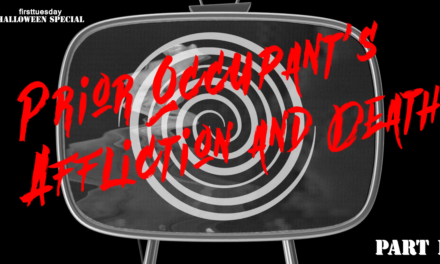Are you new to the real estate profession? Or simply interested in how others in your profession are paid? This article answers your questions about the different compensation and fee split structures common for real estate agents and brokers in California.
Commission rates
The vast majority of real estate agents and brokers are paid by commission.* This fee is a percentage of the total sales price on each transaction, usually the same for sellers’ agents and buyers’ agents.
The average commission rate is around 2.7% per agent as of 2013, according to the Los Angeles Times. However, as home prices have increased steadily in the years since then, the average commission rate has trended down slightly.
Typically, the commission rate is around 2%-3% for each broker on the transaction. This base rate can vary based on a number of factors, including:
- the price of the home — for example, higher-priced homes typically demand lower commission rates than lower-priced homes;
- the customs of the region where the sale takes place — for example, commission rates in the Inland Empire are closer to 2% than 3%;
- the type of property — for example, brokers may charge a higher commission rate or even a flat rate for lower-priced property like mobile homes; and
- the personal relationship of the client with the broker — for example, a broker may extend a low commission rate to a long-time friend or frequent client.
*While the term “commission” is commonly used across the real estate profession, first tuesday feels the term “fee” is more representative of the care, professionalism and fiduciary duty behind a broker’s earnings.
Agent-broker split models
For a new agent calculating annual income, they be tempted to take the average selling price in their neighborhood, multiply it by 2%-3% and start counting dollar signs.
But it’s not as simple as all that — agents are required to practice under supervision of an employing broker. For that supervision, most agents receive a portion of their employing broker’s split.
The fee split apportioned to the agent varies significantly, based on factors like what kind of guidance, materials, referrals and office space the broker offers. There are basically two types of offices:
- Offices which offer a split commission in exchange for the broker paying for the up-front investment of insurance, marketing materials, supplies, printing, office space, etc.; and
- Offices which offer 100% commission but charge the agent fees for insurance, marketing materials, supplies, printing, desk space, etc.
In the first case, the traditional split commission model involves less risk on behalf of the agent, since they don’t invest any of their personal money into a sale. On the other hand, 100% commission models require the agent to sink their own money into each sale, which doesn’t always pay off since some sellers get cold feet or their homes just don’t sell before the listing expires.
Offices with large brand-name recognition can offer a mix of the two models, with a traditional commission split for all agents until they sell a certain number of homes. Once they exceed that ceiling, they may receive 100% commission, plus some fees due to the broker.
Finally, one other model exists to consider, though it is really only used by Redfin. This national brokerage eschews the commission model, paying its sales agents a salary, plus bonuses for positive reviews. Very few brokerages are large enough to offer this kind of stability, thus the model is mostly limited.
Related article:
Fee split rate
The actual fee split can vary from 50%-50% to 100%-0% (plus extra fees/costs).
Typically, agents who receive lower fee splits are new agents who require more of the brokers’ time to guide them through the process. These agents are likely to close very few sales in their first several months and years of practice, thus the broker is investing more of their own money to pay for the agent’s office space and materials.
Agents who receive higher commission rates under the traditional commission split model typically cap out around an 80%-20% or 85%-15% commission split with their broker. These profitable agents close several sales per month.
These norms hold true whether the agent is a sales agent or broker-associate, as fee splits are usually based purely on the number of sales closed.
On the other hand, broker-associates may receive a discount on errors & omissions insurance, which provides coverage against claims made when an agent or broker is sued for negligent real estate practice. This is only helpful when operating under the 100% commission model, since under this model agents and broker associates will be paying for the extra costs themselves.
Related article:
Costs deducted from income
Agents employed under the 100% commission model — and brokers offering the traditional commission split model — need to consider the following necessary costs when calculating their final income:
- desk fees — ranges around $100-$500 a month depending on the office space and what’s included;
- for sale and open house signs — about $20 each sign;
- business cards — around $50;
- print advertising — depends on the type of and amount of paper advertising you conduct;
- electronic advertising — depends on how much electronic advertising you conduct;
- technology fees — around $25-$50 each month;
- payments to a transaction coordinator — $250-$300 per transaction;
- lock boxes — around $100 to purchase each box, plus $15/month for the key app to use the box;
- insurance — $2,000-$3,000 annually per agent;
- fees to join your local board of realtors, if the employing broker requires membership — around $500;
- local multiple listing service (MLS) fees — around $400-$1,000 per year;
- broker-generated leads — typically shaves off the total commission split;
- franchise fees — typically shaves 5%-10% off the total commission split;
- for new agents, working with a mentor also reduces the total commission split.
All agents and brokers, regardless of compensation structure, need to budget for license renewal, which is required every four years in California. The cost to renew a sales agent license is $245 due to the state, plus the cost of required education courses, ranging from $45-$80. The cost to renew a broker license is $300 due to the state, plus the cost of required education courses. If renewing late, the renewal fee is significantly higher.
Editor’s note — first tuesday offers educational courses to renew and obtain sales agent and broker licenses in California.
Getting paid
Once a home closes, each broker is paid out of the escrow account. Sometimes the escrow company will send over a check the same day as closing, and other times it may take several days up to a week.
Then, the broker distributes the agreed-upon amount to the sales agent. Some brokers will do this right away, while others will wait until the sales agent finishes necessary paperwork to properly close the file.
Exactly how and when an agent is paid their share of the real estate fee is detailed in their signed employment agreement. While rarely a problem, sales agents who are not paid in a timely manner or at the agreed-upon rate may contact their local Labor Commissioner’s Office. [See RPI Form 505]
Related article:
A number of sources were consulted for this article. first tuesday would like to offer a special thanks to Andy Bencosme with Century 21 Village Realty.



















Thanks for trying to spell it out, you did a great job. Though, I realize you are writing for the nation, I’d like to clarify that in California…specifically Southern California almost all of the costs you mentioned are over the high end on your list. i.e. Transaction coordinators start at $400, mls fees start at $1100 because they force other incidentals on us and bury them in the MLS fees, tech fees start at $125 and the list goes on. Thanks again, I love your ‘on point’ articles.